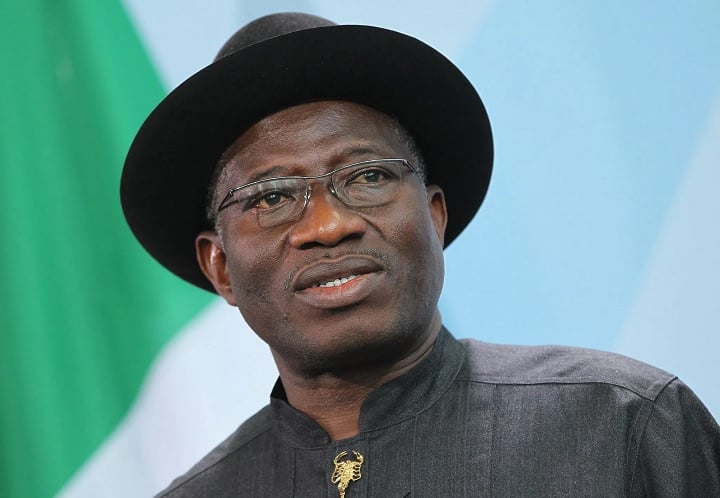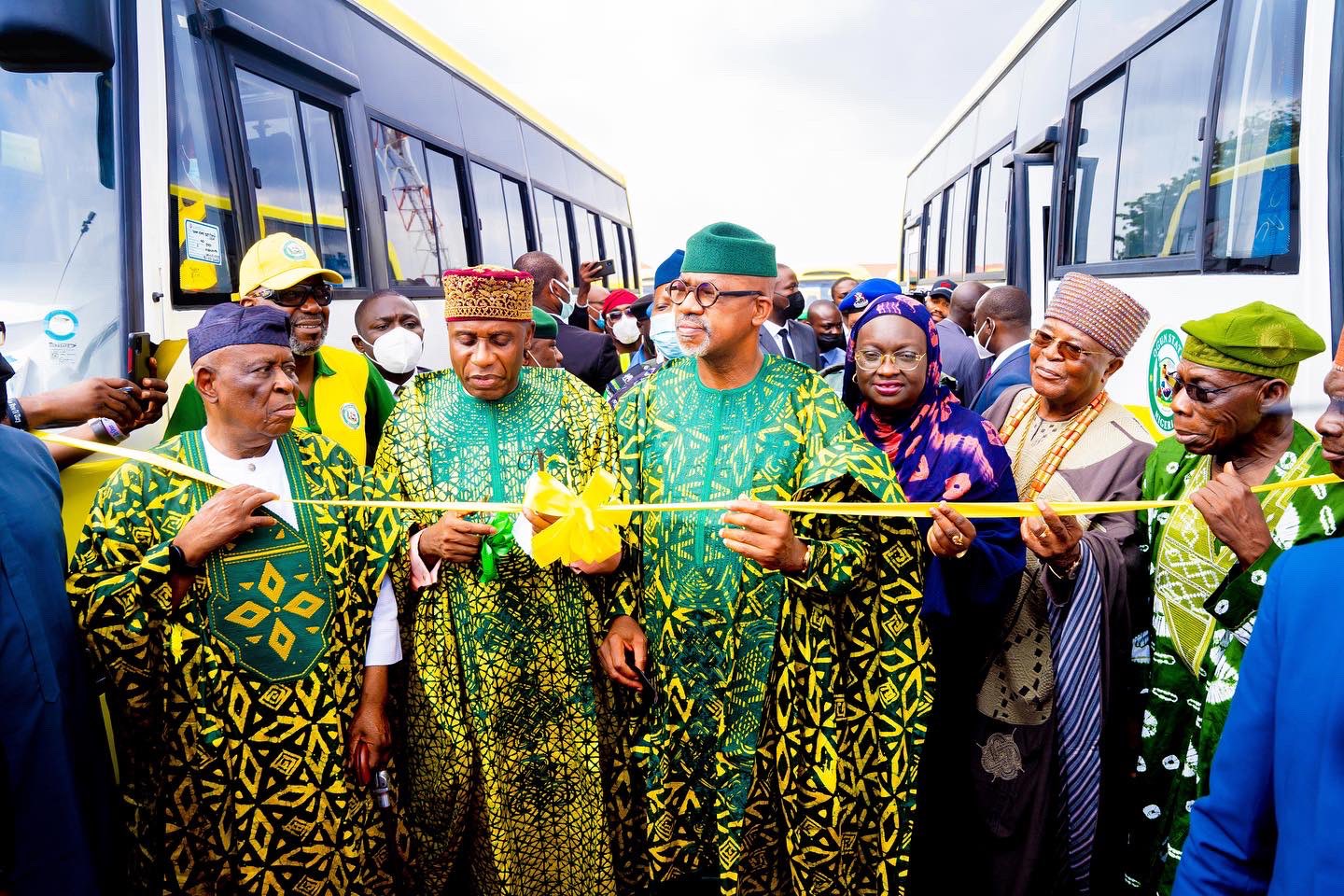Jonathan:
BY OLADIPO AKANDE
Lately, Dr. Goodluck Ebele Jonathan has been the subject of recent discussions regarding President Muhammadu Buhari’s successor. The elder statesman had maintained a largely modest and quiet life as a private citizen since he was ousted as Nigeria’s president in 2015, only advocating for sustainable peace and democratic rule across Africa.
However, given Dr. Jonathan’s influence, it may be no coincidence that his name keeps popping up in such political permutations and conversations, even as the (unofficial) north-south rotational arrangement favours the emergence of a president from Southern Nigeria. As such, it is important to take a cursory look at his antecedents; revisiting his policies and plans, and assessing their impact and/or achievements.
Following his election as President of the Federal Republic of Nigeria in 2011, Dr. Goodluck Ebele Jonathan, like a man with a plan, swung into action, unveiling his Transformation Agenda – a framework designed to implement policies that would accelerate economic growth and reforms that will improve the lives of Nigerians and bring development in critical spheres of the economy. It sought to transform Nigeria into one of the world’s 20 largest economies by 2020.
Advertisement
Goodluck Jonathan’s Transformation Agenda birthed lofty legacies across sectors of the economy. In the education sector, Goodluck Jonathan established 9 new federal universities and strengthened existing ones to increase access to tertiary education, fulfilling the target of having at least one Federal University in each state of the federation. One hundred and twenty-five Almajiri schools across 13 northern states to improve literacy in the north, introduced Girls Education Programmes with 27 special girls school in Adamawa, Yobe, Zamfara, Nasarawa, Ebonyi, Ekiti, Delta and Akwa Ibom states, strengthened TETFund for capacity and infrastructure, increase of enrolment on UBEC and over 8 million library resources to basic and secondary schools across the federation.
Under his transformational watch, Nigeria was rated as the largest economy in Africa and the 23rd in the world by the World Bank and the IMF, with a GDP well above US$570 billion. In line with his drive, the Nigerian Customs raked in N970 billion in revenue in 2014 – the highest in the history of Nigeria. The country’s gas supply market grew from 300 million to two billion cubic feet per day (cfpd) just as proceeds from Nigeria’s non-oil exports rose to 2.97 billion by the end of 2013. Nigeria also became Africa’s number one destination of foreign investors. In the first six months of 2014, a total of US$9.70 billion flowed into the national economy as foreign direct investments (FDI).
The Transformation Agenda also impacted Nigeria’s labour force. Recognizing the essence of the National Youth Service Corps (NYSC) and sacrifices of youth corps members, the approved upward review of monthly allowances from N9,700 naira to N19,800 naira, as well as the implementation of Minimum Wage Increase for Nigerian workers to N18,900 naira monthly.
Advertisement
He facilitated a leap in space advancement, including the launch of NigeriaSat-2 and NigeriaSat-X Satellites to expand Internet Bandwidth and provide early warning to prevent natural disasters, as well as an indigenous Synthetic Aperture Radar Satellite developed by the National Space Research and Development Agency (NASRDA) to support security, map out solid mineral deposits and secure the coastal areas of Niger Delta.
Jonathan’s transformational policies drove Nigeria’s agricultural sector towards food-sufficiency. In 2013, Nigeria’s food imports reduced by over 40% and with an output of over 45 million metric tonnes in 2014, Nigeria was ranked as the world’s largest producer of cassava, by the Food and Agricultural Organization of the United Nations (FAO). Under the Youth Employment Agricultural Programme (YEAP), N120 million naira grants were disbursed to twenty seven young farmers, just as N26 billion naira was distributed to young farmers in 2015 for the FADAMA dry season farming project.
Again, farmers were granted access to funds, grants, loans and other assistance to the tune of N25 billion naira through the Bank of Industry (BOI) in a bid to boost rice production, and in 2014, local rice production contributed N320 Billion Naira to the Gross Domestic Product (GDP) of the country.
Aware of the misgivings in some quarters and the need for a national discourse, Goodluck Jonathan set up the Nigerian National Conference headed by retired Chief Justice Idris Legbo Kutigi in 2014. Recommendations included the creation of state police and the drafting of state constitutions, in response to many years of agitation to permit autonomy of states in local administration. Unfortunately, he was ousted before any of these were implemented.
Advertisement
Keen on gender inclusion and empowerment, the transformation agenda birthed the 35% Affirmative Action for women in politics. With these, women were given more prominent roles in President Jonathan’s administration, including but not limited to Ngozi Okonjo-Iweala, Diezani Alison-Madueke, Stella Oduah, Joy Ogwu, Sarah Jibril; and Viola Onwuliri. It is worthy of note that Nigeria produced its first female Chief Justice, Miriam Aloma Mukhtar under Jonathan’s watch.
The Goodluck Jonathan administration also orchestrated the revival of the dead automotive industry in Nigeria. Through a conducive and viable business environment, Innoson Vehicle Manufacturing Company (IVM), Nigeria’s flagship indigenous automaker, began the sale of their first made-in-Nigeria cars and SUVs. In addition, Peugeot, Nissan and Hyundai now assemble or wholly manufacture small cars, trucks and buses at various locations in Nigeria.
President Goodluck Jonathan’s Transformation Agenda was the major anchor of the transport sector. The introduction of a multimodal transport system led to improved maritime safety and security, the restoration of railways and enhancement of water transportation. The railway sector which was comatose for many years was revived and restored for the benefit of the masses with the rehabilitation of over 3,000 kilometres of rail lines across the country. Intercity train services like the Lagos – Ibadan – Ilorin, Minna – Kaduna, Kaduna – Kano and the Kano – Nguru, were opened up and running courtesy of this intervention.
As the quest to succeed President Muhammadu Buhari thickens, with many politicians jostling to improve their sell themselves to Nigerians, there is a duty to thoroughly interrogate the policy capacities, credentials and achievements of these persons to separate the wheat from the chaff and jokers, political jobbers from real competent Nigerians with good plans for the growth and development of the country. With the current situation of things, Nigerians cannot afford to test-run or experiment leaders. The country needs and deserves a President who will hit the ground running with well-thought policies that will improve our fortunes and laid out plans for implementation.
Advertisement
Akande is a public affairs analyst based in the US. You can reach on Twitter @OladipoAkande
Advertisement
Views expressed by contributors are strictly personal and not of TheCable.
Add a comment





